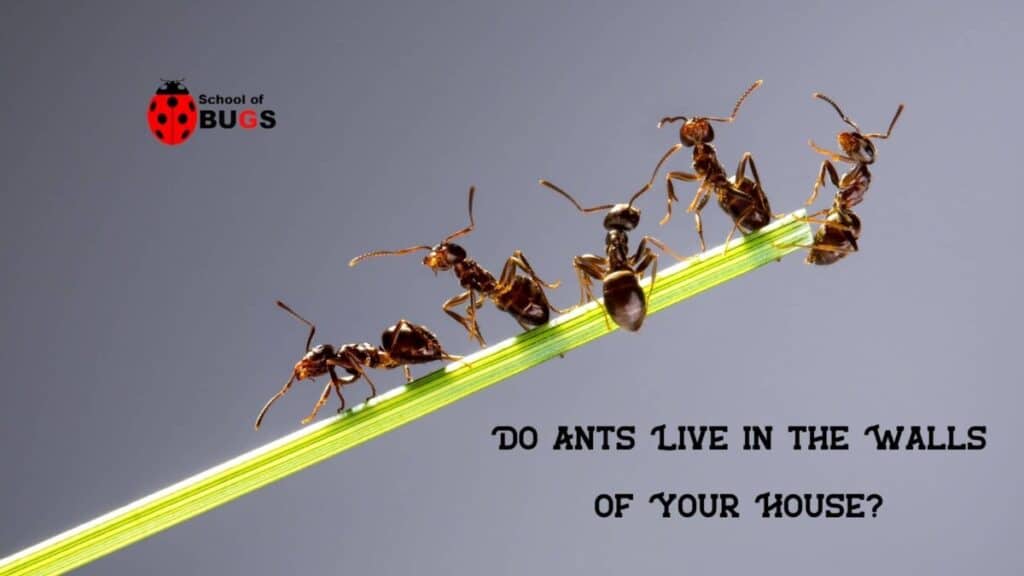
Ants are one of the most common pests on the planet and they have a very good reason for taking up residence within your walls.
Ants are like most other insects in that they seek a source of warmth or shelter, food, and water.
If you see the occasional ant or five skulking about the bottom of your trim, or cavorting across your ceiling around your crown molding, the chances are pretty high that there are a whole lot more of them inside your walls.
Ant infestations are completely within the norm, regardless of whether or not you like it or keep a neat and tidy home.
There’s both a reason for their presence and a number of ways to exorcise them from between your sheetrock, and in this article, we’ll cover the following:
- What attracts ants into your home
- Why ants take up a more permanent residence
- The types of ants that prefer the interior of your walls
- How to know that you have a serious infestation
- What you can do to get rid of the ants
- How you can prevent their return
What Attracts Ants Into Your Home?
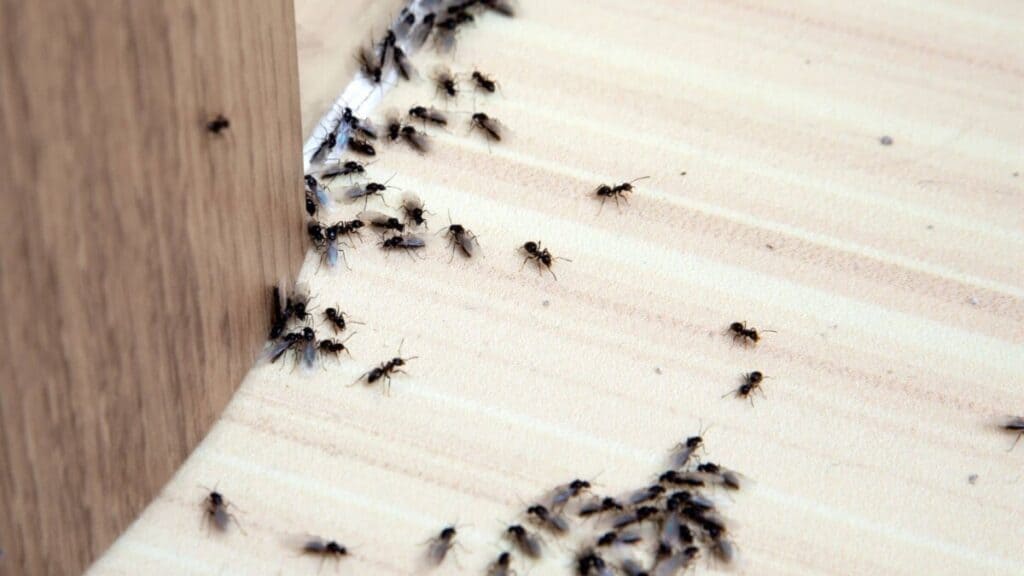
As disgusted as you might be that you have a potential ant infestation, think about it from their point of view.
Survival is the name of the game and ants don’t arrive at your doorstep because they want to irritate you, but because something is attractive to them.
The interior of walls offers safe haven to ants, along with the residual warmth that exists inside them, especially during the winter.
The interior of your walls holds cool and warm air within for far longer than you suspect.
But that’s not the whole story. Living in your walls gives ants a front-row seat to the things within your home they need to survive, such as sources of food and water.
Within your wall, they can build, eat, drink, and remain warm and safe from outside predators that ould consume them.
Why Do Ants Set Up a Permanent Residence Inside Your Walls?
It’s one thing to move in and discover sources of food, water, warmth, and safety. It’s quite another to establish their own home within your home.

Ants are builders and also, incredibly resourceful, tireless workers.
- Worker ants build and forage for food and water
- Soldier ants defend the home from outside attack
- Queen ants produce the eggs to propagate their ant society
- Alates (special, winged ants) fly far from home in search of new colonies to establish
Once ants have moved in, begun building their interior fortress and superhighways for fast and efficient travel, they have no reason to ever leave again and this is why they stay.
So long as their home is strong, food and water are supplied, and the queen is expanding their empire, they will remain.
If their alates are able to travel far within your walls, it’s entirely possible that the ants will go on to establish multiple hives just behind your sheetrock.
The only way it ends is if you discover them and put an end to their expansion days for good.
What Kind of Ants Prefer the Inside of Walls?
Prepare yourself, because there are a lot of ant species that would be ever so happy to haul up stakes and relocate their society from the outside world to the inside of your home.
Some types of ants prefer the insides of your walls more than others, but it’s all the same when you’re dealing with an infestation.
Carpenter Ants
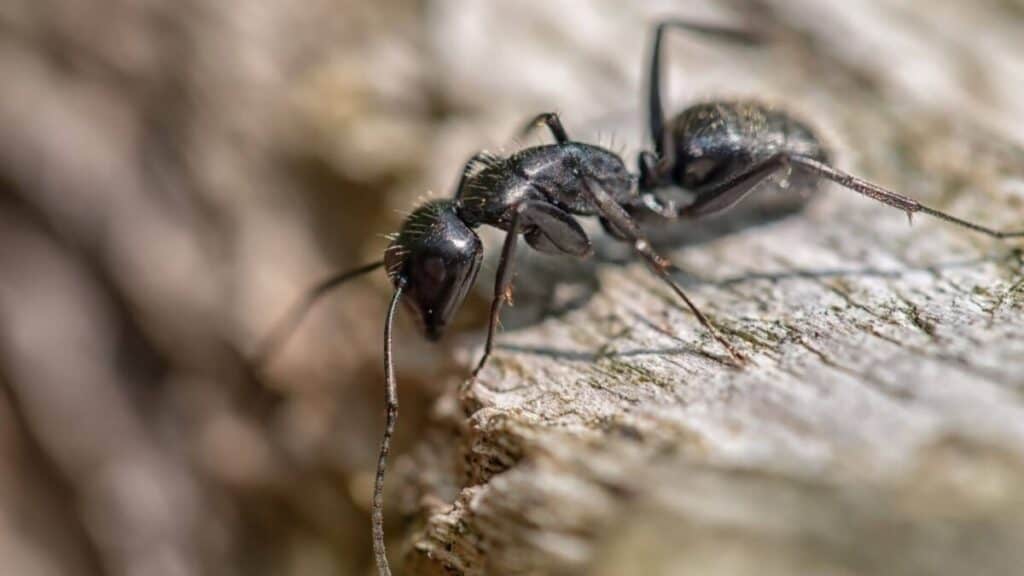
Carpenter ants prefer to have a central home with an associated nest not too far away. They prefer voids in the walls, insulation, moist or rotten wood, and crawlspaces.
Not only will they build a large nest, but they’ll also build a second, establishing roads for traveling between them.
Ghost Ants
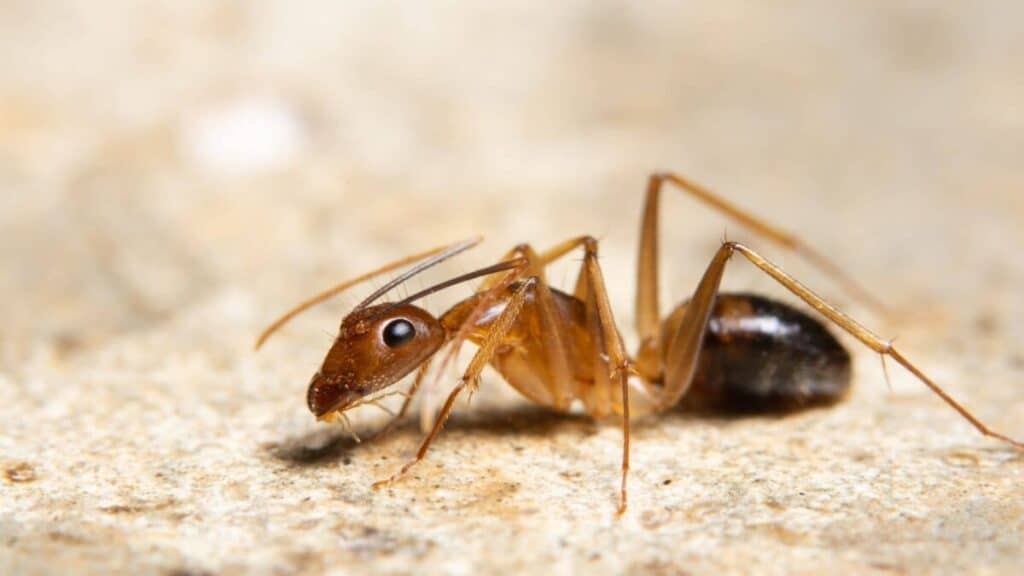
These ants prefer anything behind your baseboards, trim, or crown molding. They also like walls behind cabinets and will establish travel routes between their home and your kitchen.
Odorous Ants
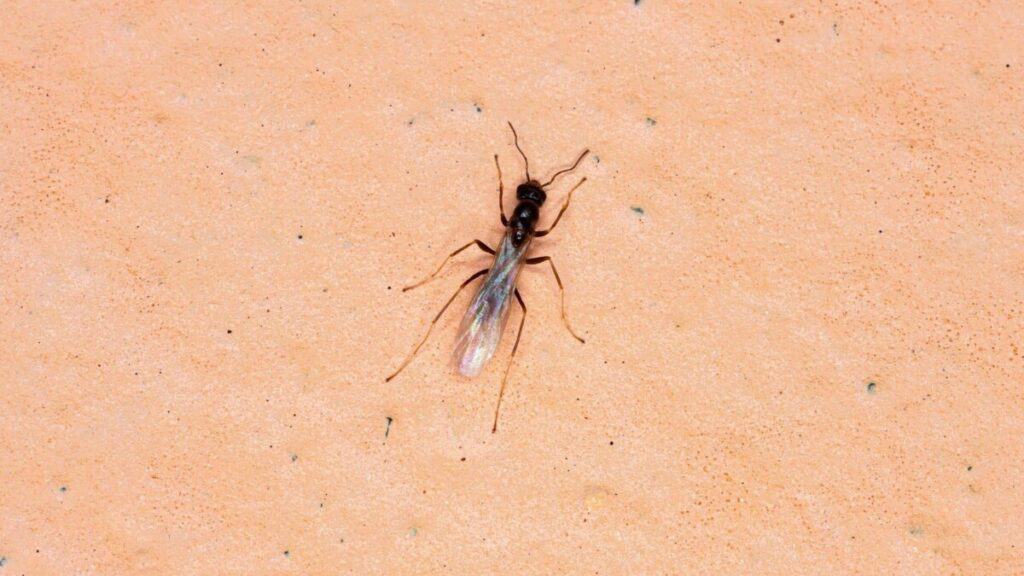
If you discover that you’re infested with odorous ants, that’s not a good sign, as it is indicative that you may also have a termite problem. Odorous ants love to associate and move in next to termites.
Argentine Ants
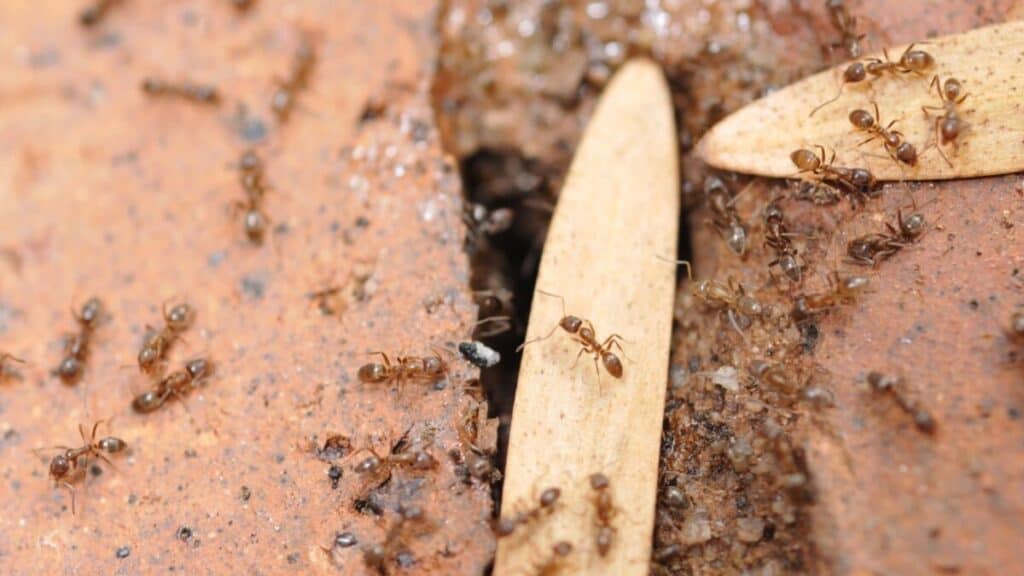
Argentine ants absolutely adore grease and sugar. They will build their empire within your wall and quickly establish a trade route with your bags of slightly unsealed sugar, brown sugar, cooking oil, and powdered sugar.
Citronella Ants
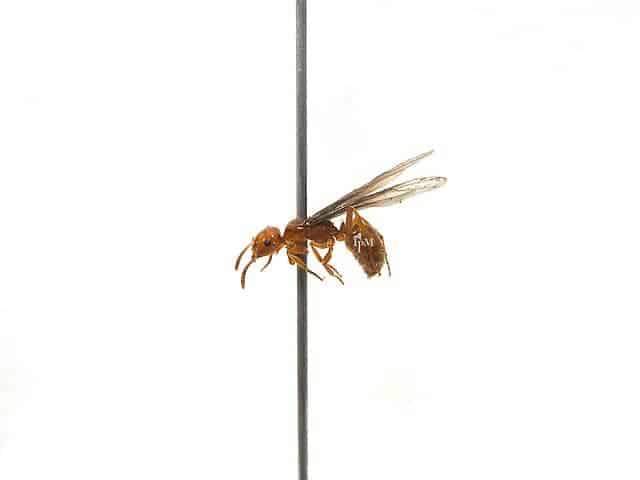
These are the winged ants that are the stuff of nightmares. They nest within the walls, love sugar, and will infest your walls from the crown molding all the way down to the baseboards.
There are many more ants that would love to be roommates with you, however, these are the ones that are the most likely to take up residence inside your walls rather than doors, windows, attics, and cellars.
How to Recognize an Ant Infestation
Ants don’t want to be seen. In fact, oftentimes they are almost like tiny ninjas, flitting from shadow to shadow, ever in search of exposed sugar cookies and those escaped crumbs from your daughter’s birthday party.
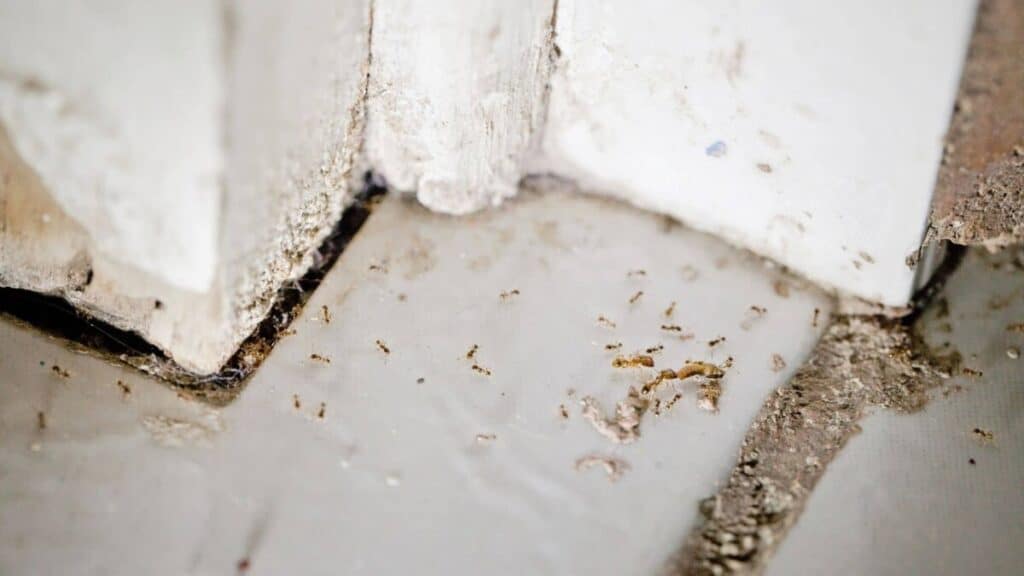
Fortunately, their brain plans are nearly microscopic, so they tend to leave signs of their comings and goings.
- Piles of dust from their construction efforts, peeping out from below the baseboards
- Spotting an ant or two crawling into a power outlet
- Scuttling sounds inside your walls
- Ants pouring out from underneath or overhead when you bang on the wall
- Detectable ant trails
These are all surefire signs that you have an ant invasion that is either underway or construction is complete at this point.
How to Get Rid of an Ant Infestation in Your Walls
There are several ways that you can get these ants under control and throw them out for good. Natural remedies are the preference of some, but occasionally, you’ll have to get downright evil.
- Diatomaceous Earth
- Peppermint oil
- Cinnamon
- Cayenne Pepper
Diatomaceous Earth is considered to be pet safe and human friendly but, as far as insects are concerned, not so much. Sprinkle some of this stuff around the areas where ants have left signs and sit back to wait it out.
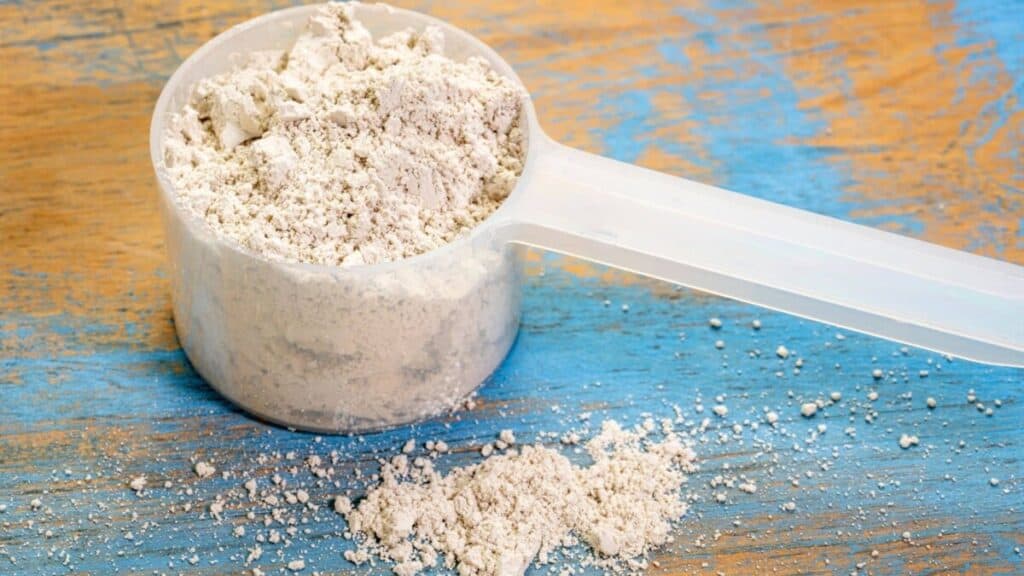
Diatomaceous Earth sticks to the ants and, since it’s razor-sharp at a microscopic level, it will cut them to pieces as they happily carry the tiny, deadly crystals home to share with the entire family.
Ants loathe Peppermint Oil, Cinnamon, and Cayenne Pepper.
Most people advise you to distribute these in the same way as Diatomaceous Earth, however, the ants will simply avoid it, remaining in their homes and establishing new routes.
If you can dilute any of the above three ingredients in water, and fill a hand-pump sprayer up, you can gently spray it underneath the wall where they are at.
If you can access the inner wall in any way, you can hose them down directly.
You should be careful with this method, as the last thing you want to do is saturate the wood, insulation, and sheetrock, so it has to be a gentle ministration.
Professional Method

Your other option is to call in professional help. Of course, you can do this right off the bat, in the case that you neither have the time nor the inclination to hunt down and destroy them all for good.
A professional will be far more capable of studying the extent of the damage and ascertaining whether or not there is residual damage or if the ants are merely following along in the wake of termites, which they sometimes do.
Once a professional exterminator has determined the cause of the problem, the current problem, the ingress and egress routes, and the nests in the walls, they will be able to eliminate the issue.
How to Prevent Ants from Coming In
The best way to approach this is an all-or-nothing attitude. Begin with the outside of your home and inside, along the perimeter wall.
What you are looking for are any exposure points where ants can enter the home freely.
Using silicone or caulk, fill in every point that you can locate. You can even use expanding foam sealants if the opening is too large for you to simply lay down a bead to seal it up.

Next, you want to do a thorough house cleaning. That includes closets, cabinets, underneath the sinks, around and behind every dark corner, and crevice that you can find.
Be sure to check all of your plumbing to ascertain leaks.
The most important thing to focus on is eliminating all sources of water and food. If they have nothing to sustain themselves they will only ever visit before happily seeing themselves out the door.
Final Thoughts
Ant infestations within walls are not only an extreme inconvenience but also potentially devastating in terms of the damage that they can do overtime. The best offense is an outstanding defense.
Once you rid your home of the initial infestation, preventative maintenance becomes your best friend and ally.
Prepare your home accordingly and never have to worry about thousands of uninvited roommates thriving within your walls again.
Alright, that’s it for this article, here are a few hand-selected articles that you might also find interesting reads:
Can Ants Become Immune to Poison?How many ants live in a colony – This surprised me!
What Are These Tiny Crawling Bugs in my House!?
Recent Posts
Tiny Black Bugs in Bathroom NO WINGS: What They Are and What to Do!
Finding tiny black bugs in your bathroom can be uncomfortable, to say the least. Especially if they are persistent, or they appear in very large numbers, which they often like to do. When it...
Tiny Black Bugs in Plant Soil - What Are They & What To Do About It
A short horror story: You get a new houseplant. You do your best to take care of it. You’ve ensured that it has the right soil, the right amount of sun, it gets enough water. And then one day, you...

